Alcoutim
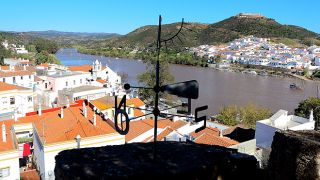
Alcoutim no longer has the walls that defended its border for centuries, but it retains the tranquil atmosphere of a mountain town in the Algarve.
On the banks of the Guadiana River, the history of the town of Alcoutim is closely linked to the fact that it is located where the tides are felt, which forced the boats that transported the region's products to wait for hours for favourable sailing conditions. However, since ancient times, its strategic position on the border with the neighbouring Spanish town of Sanlúcar del Guadiana meant that support and defence structures had to be built, of which some remains have become points of interest to visit.
A few minutes' stroll leads to the discovery of centuries-old houses and monuments such as the Church of Misericórdia (Igreja da Misericórdia) and the Castle, home to the Archaeology Museum Nucleus (Núcleo Museológico de Arqueologia), where you can see the largest collection of board games from the Islamic period from a single archaeological site.
In Alcoutim, it is a must to go down to the riverside, marked by the sober hermitage of St. Anthony (ermida de Santo António) and the former House of the Counts of Alcoutim (Casa dos Condes de Alcoutim), to savour a few quiet moments with a cool drink on a terrace, while watching the returning fishing boats or the sailboats anchored in the small marina.
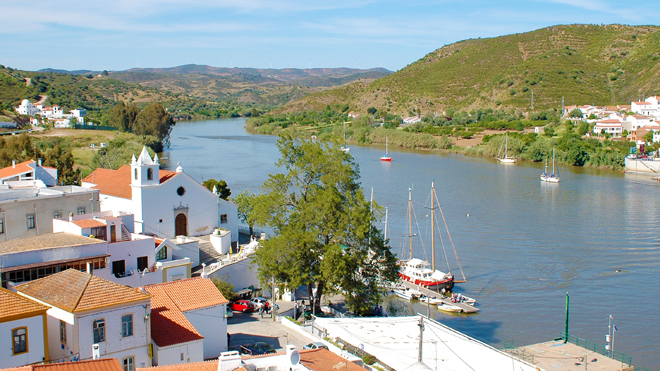
Being a border town, there are many stories of smugglers and old paths travelled secretly that take on a new life as trails for observing nature, the landscape and local customs. The Smuggling Festival (Festival do Contrabando) in March and the Walkers (Caminheiros) meetings that take place throughout the year are special moments to get to know the secrets and mysteries of Alcoutim. If you enjoy long walks, you can choose Alcoutim to start the Guadiana Route (Rota do Guadiana), which follows the course of the river, and the Algarve Route (Via Algarviana), which crosses the inland territory of the Algarve from east to west.
Smuggling was the livelihood of many families for a good part of the 20th century, especially at the time of the Spanish Civil War (1936-1939) and in the years that followed. The products varied over time and according to need. It is said that coffee, sugar, eggs, rice, soap, flour, bread, figs, wool and tobacco left from Portugal, while fabrics, soaps, perfumes, cognac and almond kernels arrived from the neighbouring country.

Throughout the year, there are other times when it is worth visiting Alcoutim and experiencing up close some of the most important festivities for local culture and identity, such as the Alcoutim Festivities (Festas de Alcoutim), which take place at the beginning of September, or the “Live Alcoutim” (“Alcoutim Com Vida”) programme, with concerts and entertainment every Wednesday in the summer months. Anyone visiting the town on 15 August will be able to watch the River Procession of Our Lady of Mount Carmel (Procissão Fluvial da Nossa Senhora do Carmo), in which Portuguese, Spanish and foreign boats decorate themselves to accompany the image on the waters of the Guadiana.
One of Alcoutim's charms is the river, where you can take boat trips, practise nautical activities and even reach the other bank on a famous cross-border slide, flying over the Guadiana.
In the inland territory of the Algarve, and with a river, you cannot miss some leisure time at the Pego Fundo River Beach, in the middle of the rural landscape of the north-eastern Algarve.
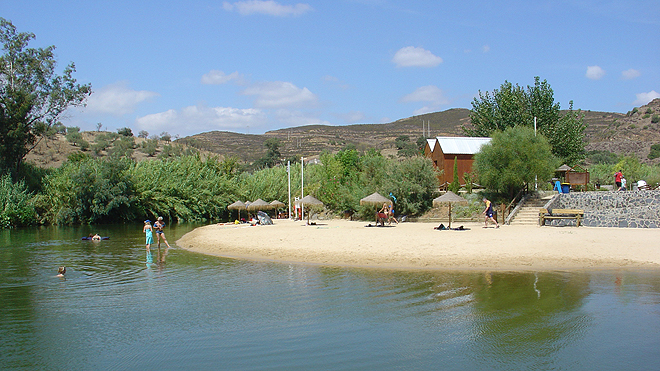
As for gastronomic specialities, we recommend the black pork specialities (reared in the region), the river fish dishes and the game dishes. Traditional bread, baked in a wood-fired oven, is the basis for regional delicacies such as migas (bread fried with all type of ingredients), gazpacho and açorda (bread soup). For dessert, try the nógado. It is a sweet of Arab origin, traditionally made with dried fruit dipped in boiling honey after being pounded in a mortar. They also make them from wheat flour dough.
Nearby, it is worth visiting the Lavajo Menhirs (Menires do Lavajo) and the Montinho das Laranjeiras Ruins (Ruínas do Montinho das Laranjeiras), as well as the River Museum (Museo do Rio), located in the village of Guerreiros do Rio. It is a good place to learn about the traditions, techniques, artefacts and memories linked to the Guadiana River and the riverside populations. Near the village of Pereiro, on Monte Zambujo, the Santa Justa Museum Nucleus (Núcleo Museológico de Santa Justa), which recreates a primary school from the late 1950s, is a tribute to all the municipality’s teachers.


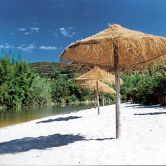
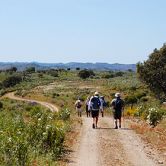



 Explore
Explore 
 Remember and Share
Remember and Share 


